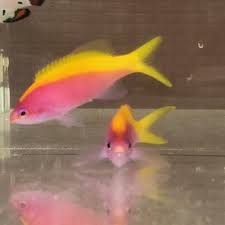Legends of Dragons Associated with Chinese Emperors

Dragons have been an enduring symbol of power, strength, and imperial authority in Chinese culture for centuries. From ancient myths to imperial dynasties, the dragon has been a vital part of Chinese history and the stories surrounding its emperors. In these legends, dragons are often portrayed not just as mystical creatures, but as divine beings connected to the rulers, guiding them, protecting them, and even legitimizing their reigns. Let’s explore some of the most famous dragon legends tied to Chinese emperors, shedding light on the mythical and symbolic connections between the rulers and this revered creature.
The Dragon and the Legend of Emperor Huangdi (Yellow Emperor)
The Yellow Emperor, or Huangdi, is one of the most significant figures in Chinese mythology. Often considered the founding emperor of Chinese civilization, Huangdi is associated with numerous mythical stories, including his connection with the dragon. According to legend, the Yellow Emperor was believed to have been born under auspicious circumstances, marked by the appearance of a dragon.
One of the most well-known myths tells of Huangdi’s encounter with a dragon in the skies during a pivotal battle. It is said that the dragon flew over his army as a divine sign, signaling the emperor’s destiny to unite the warring tribes of China and establish a new era of peace and prosperity. The dragon’s appearance was seen as a celestial approval of his rule, and from this point, the dragon became a symbol of imperial authority.
Huangdi’s association with the dragon also extended to his legacy as the founder of the Yellow Emperor’s lineage. His reign was seen as the epitome of wise and harmonious rule, and the dragon became a symbol of both his imperial bloodline and the divine protection over the emperors that followed.
The Jade Emperor and the Celestial Dragons
Another important dragon figure in Chinese lore is the Jade Emperor, the supreme deity in Taoist belief. He is said to govern the heavens and all aspects of the universe. The Jade Emperor’s domain is populated with celestial dragons, who serve as his messengers and warriors. These dragons are responsible for carrying out his will, from delivering rain to the Earth to protecting the divine order of the universe.
In some legends, the Jade Emperor’s dragons are said to have protected the emperors of China, with each emperor possessing a guardian dragon that would appear during times of war or crisis. These dragons were believed to be sent as omens or blessings, helping emperors in their times of need. The Jade Emperor’s dragons are often depicted as noble, majestic creatures, symbolizing the divine authority bestowed upon the emperor by the heavens.
Emperor Tang Taizong and the Dragon’s Protection
One of the most famous emperors in Chinese history, Emperor Tang Taizong (Li Shimin), who ruled during the Tang Dynasty (618–907), had a unique connection to the dragon. According to legend, during his military campaigns, the emperor’s army was aided by a dragon-shaped cloud that appeared in the sky, guiding the soldiers and ensuring their victory. This event was interpreted as a divine sign that the emperor had the Mandate of Heaven, a traditional Chinese belief that the emperor’s right to rule was granted by a higher celestial power.
In addition to this event, it is said that the emperor’s dragon banners were believed to bring good fortune and protection to his armies. The dragon, as a symbol of imperial power, was a constant presence throughout Emperor Taizong’s reign. His successful campaigns were often attributed to the favor of the celestial dragon, ensuring that the emperor’s legacy was firmly rooted in the mythological belief that dragons brought divine strength and protection.
The Dragon and the Imperial Seal
The imperial seal, an important artifact of Chinese emperors, was often associated with the image of the dragon. The dragon was used to symbolize the Mandate of Heaven, the belief that an emperor’s authority came directly from the divine. As the supreme ruler of China, the emperor was seen as the son of heaven, and the dragon was its earthly representation. The imperial seal, featuring a dragon, was used to authenticate official documents, decrees, and other matters of state. This seal was considered so powerful that it was believed to possess mystical properties, granting the emperor control over the elements and the natural world.
One of the most famous examples of a dragon-themed imperial artifact is the dragon robe, worn by emperors during important ceremonies. The robe, embroidered with dragons, symbolized the emperor’s direct connection to the celestial dragon. The use of the dragon in royal garments and insignia reinforced the idea that the emperor was the earthly embodiment of the dragon, linking the ruler’s authority to the divine forces that governed the universe.
The Dragon and the Forbidden City
The Forbidden City, the imperial palace of the Ming and Qing dynasties, is another key place where dragons are integral to the symbol of the emperor’s power. Within the palace, dragons are prominently featured in the architecture, art, and decor, underscoring the emperor’s divine right to rule. The dragon motif can be found in many aspects of the Forbidden City, from the dragon-shaped rooftops to the magnificent dragon throne.
The dragon throne, located in the Hall of Supreme Harmony, was considered the most important seat in the empire. The emperor, as the Son of Heaven, would sit on this throne, symbolizing his connection to the celestial dragon. The throne’s design, with its intricate dragon carvings, was meant to remind both the emperor and his subjects of the emperor’s sacred duty to maintain harmony between heaven and earth.
Conclusion
The myths and legends surrounding dragons in relation to Chinese emperors offer fascinating insight into the symbolic and spiritual significance of this majestic creature. Dragons, as celestial beings, were seen as protectors and divine endorsers of the emperor’s rule. From Emperor Huangdi, who was born under the sign of the dragon, to the imperial use of dragon symbols, the dragon has played a central role in establishing and legitimizing the authority of Chinese emperors throughout history. As powerful symbols of strength, protection, and divine favor, the dragon continues to hold a deep and meaningful place in Chinese culture, connecting the imperial family to the celestial realm and the natural world.

